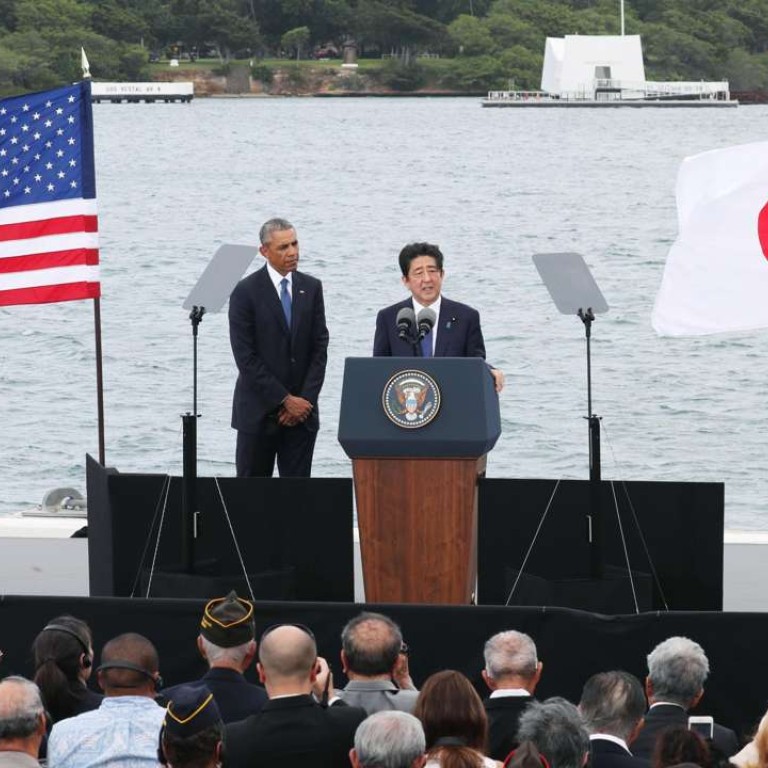
Pearl Harbour visit shows Japan’s Abe has eyes trained on China and pacifist rethink
Andrew Hammond says the Japanese PM’s historic visit aims to showcase strong US ties in the face of China’s rise, and push for changes to Japan’s post-war pacifist constitution
For Abe, now four years into his second stint as prime minister, the meeting is a symbolic way to showcase to the world, especially China, the enduring strength of US-Japan relations, and he called for a “lasting alliance of peace and hope” between the two countries. The visit is the second leg in a year of reconciliation with the United States, following Obama’s visit to Hiroshima in May.
Watch: Shinzo Abe in Pearl Habour
The visit is significant, coming so soon after Abe’s meeting with Russian President Vladimir Putin. A common thread is the concerns that Tokyo, Moscow and Washington share about a “rising China” in the Asia-Pacific and beyond.
Tokyo has been alarmed by the unravelling of the TPP, which opens up a window of opportunity for Beijing to assert itself
China’s alternative vision to TPP is for a Free Trade Area of the Asia Pacific plus a pact, for which discussions have been under way since 2012, known as the Regional Comprehensive Economic Partnership, which would not include the United States.
From China’s perspective, these two agreements would be much more conducive to its national interests, by creating free trade areas with China potentially at the centre. And by playing a lead role in championing these initiatives, Beijing aspires to burnish its regional leadership credentials.
Watch: China eyes Apec trade leadership after Trump’s win
Abe knows his historic trip to Pearl Harbour could give him a lift in the polls
This geopolitical context is also shaping Abe’s domestic political strategy. Abe knows that his historic trip to Pearl Harbour could give him a lift in the polls (his approval rating is already a strong 60 per cent) in advance of potentially calling a snap general election early next year. While a ballot is not technically required until 2018, Abe’s team is currently calculating whether an earlier poll could minimise losses for his ruling alliance, which currently holds around a two-thirds majority in the House of Representatives, the lower chamber.
Abe may never have a better chance of pushing through constitutional change
In the current fluid geopolitical landscape, which is being reshaped as key countries manoeuvre for advantage, Abe is seeking to overturn much of the remaining legal and political underpinning of the country’s post-war pacifist security identity, so that it can become more internationally engaged, an outcome he senses that Trump could favour.
Watch: Japan’s Abe has great confidence in Trump
One big, specific measure Abe wants to push for is abolition of Article 9. This is the clause in Japan’s post-war constitution which constrains the country’s military to a strictly defensive role rather than a conventional army, and has meant that defence spending has most often remained below 1 per cent of gross domestic product.

Japanese PM Shinzo Abe under pressure from right-wing to offer no apology during Pearl Harbour visit
Andrew Hammond is an Associate at LSE IDEAS (the Centre for International Affairs, Diplomacy and Strategy) at the London School of Economics

